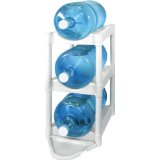Our post today is from a firearms expert addressing the
age-old question of what is “the best gun” to have. Read on to learn the keys to answering this
question.
I have been a firearms enthusiast all of my life. As an FFL
(Federal Firearms License) dealer, I have gained knowledge and experience to go
along with that enthusiasm. This article is strictly my opinion, however, I
hope to offer some tidbits of information that I have gathered throughout my
life to help you make the right decision on a gun for survival situations. Guns
are a diverse subject, from black powder to full auto, the possibilities are
endless. I am going to focus on three main “types” of firearms, handguns,
rifles, and shotguns.
The first thing to consider is what purpose you have for a
firearm. Is it going to be for defense, hunting, or both? For defense, the best
guns are those that have a high rate of fire and large ammunition capacities.
Distance to target also has to be considered, if defending inside your home, a
shotgun or handgun would be ideal. For distance, battle rifles such as the
AR-15 and AK-47 pattern rifles are ideal. Handguns are basically useless past 50
yards so they are out for an all-purpose gun. Shotguns can be effective for
close quarters defense, as well as hunting up to 100 or so yards. The AR-15
reigns supreme in this area however because it can double as a hunting rifle
and a battle rifle. Deer can be taken effectively with the 5.56mm cartridge out
to 150 yards with proper shot placement, and for close quarter and long-range
defense, it is effective as well. The AK-47 is not as good due to poor
accuracy.
Ammo availability is another factor that must be considered.
In a SHTF situation, how are you going to get ammo? You will not be able to
head down to your local Academy or Wal-Mart to pick up a box of shells. Now,
you must decide for yourself what you think is going to happen here. If we are
in a situation that we must defend ourselves against the military or a foreign
power, the choice of ammo is simple. Most of the world’s militaries use
either the 5.56mm x 45 or 7.62mm x 39 cartridges; you would be able to
collect them from the battlefield. I would choose the 5.56mm cartridge
myself. If you think the economy is going to collapse, perhaps a cheap
cartridge that can be stocked up on in plentiful amounts such as .22LR or
5.56mm would be preferred. [JR Comment – the 22LR is an excellent, low cost
choice for training new shooters]
Another option in an economic collapse could be reloading.
However, you would need a large cache of reloading supplies. I would not
recommend choosing an exotic cartridge for a survival gun, such as .300 AAC
Blackout, 6.8 SPC, or any other cartridge that is not readily available. You
probably won’t be able to find .257 Weatherby, or other wildcat type
cartridges. Cartridges like the 30-06, 30-30, .308 Winchester would all be good
choices performance wise, but more expense, and availability might be a
limiting factor. Shotgun cartridges are another ballgame altogether. They are
bulky and not cheap, but are versatile.
Another factor to consider is comfort. Who is going to be
using your firearms? Will only men be shooting them, or will the women and
children be expected to use this gun as well? It would be hard for a young
child to handle a large caliber rifle or 12-gauge shotgun. Consider this when choosing
your firearm. What you enjoy shooting will also be a big factor. If you get a
gun that you don’t like to shoot, odds are you won’t train on it, and if you
don’t train, you may as well not have it. Training is essential, but I digress…
In a large-scale extended SHTF situation, parts availability may also become a
factor. Are you going to be able to get a trigger spring for a Bennelli 20
gauge shotgun? Probably not. Will you be able to scrounge together AR-15 parts?
Probably, parts for the AR are plentiful and readily available, especially if
we face a military power. Will you be able to fix a shotgun or simple bolt
action? With some training, maybe so. Simplicity is another factor, AK-47
pattern rifles, bolt-action rifles, and single and double barrel shotguns are
simple to operate, work, and train on. There is a reason why the AK has been
around so long. A drunken monkey could operate the thing.
There are so many factors involved in choosing a firearm; I
have just begun to scratch the surface. Your purpose, ammo availability, and
comfort are three of the most important factors. If you can’t decide on just
one, buy multiple! Personal preference will be the deciding factor in most
cases. If you could have just one survival gun I would choose a 12-gauge shotgun.
With slugs, you have a mid-range hunting rifle, with buckshot, an excellent
close quarter defense gun, with birdshot, an excellent mid-range hunting gun.
Be sure to weigh the pros and cons and make the right choice
for you and what ever your selection, have plenty of ammo.
Luke22.36firearms
For additional
information see the following links:
Beginners:
The Rule of 3 (set priorities by this)
Why we are ALL Preppers (for skeptics)
Food and water:
Getting Started (Water)
Edible Wild Plants:
Natural Disaster
Preparations
Firearms and
security:
Investing for Preppers (Financial Security)
Shelter:
Wilderness
Survival:
Survival Pack (Security Patrol or Bug Out
pack)
Wilderness Survival Pack (Video)


